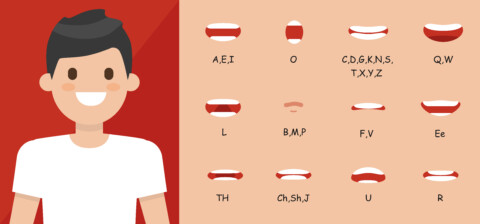Teachers of English learners regularly focus their lessons on reading and writing in the target language. For newcomers, the focus is often on speaking. However, the fourth language domain, listening, is not regularly the center of attention. It seems teachers tend to assume students will just develop adequate listening skills by default.
Although it is true they will naturally acquire much of this ability, there are a few things teachers can do to support the process. We’ll focus on each of these ideas over the next three weeks:
- Recognize that listening in a new language is difficult for a number of reasons.
- Plan lessons that give students opportunities to develop their listening skills.
- Include fun listening focused activities in lessons
Types of Listening
There are two types of listening in any language: Transactional and Interactional.
Transactional listening is one-way. The listener is quiet while the speaker conveys information. This occurs when you listen to the radio or television, someone telling a joke, or a lecture during class. Typically, the listener cannot interrupt the speaker to ask them to slow down their rate of speech or ask clarifying questions. You’ve experienced this when the referee on TV did not change their questionable ruling no matter how much you yelled at the screen explaining why he or she was wrong!
Interactional listening is two-way. In these situations, the listener is allowed, at appropriate times, to interrupt to add their own ideas or to question the speaker. Small talk conversations, a job interview, and discussion groups during class are interactional.
This type of listening is typically easier to comprehend simply because the listener can slow down the dialogue by asking questions, repeating content for clarification, or giving other non-verbal cues to signal their confusion.
Cognitive Load
The cognitive load required in transactional listening (a lecture in class) is heavy. Students must not only comprehend the sounds they’re hearing, but also determine which pieces are the most important to attend to. (Did the teacher just tell a joke that is not connected to the lesson, or does the joke mean something that I should remember?)
Additionally, they must compare the new content to their existing background knowledge about the subject, which is made more complex when they lack this assumed knowledge.
Further challenges in both transactional and interactional listening include the use of idioms, and the stress, rhythm, intonation, and reduced forms of English.
Idioms
Idioms are a dime a dozen in English speech. And, as teachers of English learners, we all know that they are often as clear as mud. These non-literal expressions often catch students between a rock and a hard place when it comes to understanding what others are saying. Many teachers will address the elephant in the room and provide explicit teaching of idioms. These lessons can be fun, but also frustrating to English learners. So, remind them you’re not pulling their leg. English speakers really do use these expressions. However, be sure to let them know they shouldn’t beat a dead horse. Idioms should be used sparingly, or else their peers may give them the cold shoulder. (See what I did there?!)
The Rhythm of English
Some of the native languages your students speak are syllable timed. This means that each syllable takes approximately the same amount of time to pronounce. French, Spanish, Korean, and Burmese are examples. A word with four syllables will take four times as long to say as a one-syllable word.
English, like Mandarin, Thai, German, and Russian, is a stress-timed language. These languages contain stressed and unstressed syllables. The time between each stressed syllable is approximately the same, meaning that some syllables are given less pronunciation time than others. It is this stress timing that constructs the rhythm of English.
You likely remember learning about syllables in elementary school. To count the syllables, your teacher taught you to clap them out or perhaps to hold your hand under your chin. Some syllables receive more stress than others. For example, “jump” is a one-syllable word, so that syllable is stressed, or emphasized. “Thousand” is a two-syllable word, and the emphasis is on the first syllable “thou-sand”. “Approximately” is a five-syllable word, but the emphasis is on the second syllable “a-pprox-i-mate-ly”.
In English, we pay more attention to the stressed syllables than to the unstressed ones. As a result, “jump” and “approximately” take the same amount of time to pronounce. To make this possible, we have to shorten, or reduce, the unstressed syllables. English speakers are so attuned to the stressed rhythm of English that we reduce pronunciations to keep the rhythm accurate.
Have you heard these reduced forms today?
| Whaddaya | What do you | “Whaddaya think?” |
| Wanna | Want to | “Do you wanna go with me?” |
| Shoulda | Should have | “I shoulda told him already.” |
| Whatser | What is her | “Whatser name?” |
| Frunna | Front of | “She’s out in frunna the building.” |
| Jeet | Did you eat | “Jeet yet?“ |
Understanding the meaning behind these reduced forms is one more reason why listening to oral English can be so difficult. How might your student respond when a friend says, “Jeet yet? Whaddaya wanna do for lunch?”
It’s no wonder many of them simply smile and nod their heads!
The cognitive load of listening to the target language all day during class is challenging for English learners. Add the idioms, an unfamiliar rhythm, and commonly used reduced forms and it’s no wonder English learners are tired of listening before lunch time. As a teacher, it is important to realize how difficult this language domain can be to master.
Next week, we’ll talk about how to plan lessons that give students opportunities to work on their listening skills.







Comments are closed.
[…] week, I shared several reasons why listening to English can be difficult for non-native speakers. Despite these challenges, […]
[…] the last two weeks, we have talked about what makes listening to academic language so difficult, and how teachers can plan lessons that focus on developing students’ listening abilities. This […]